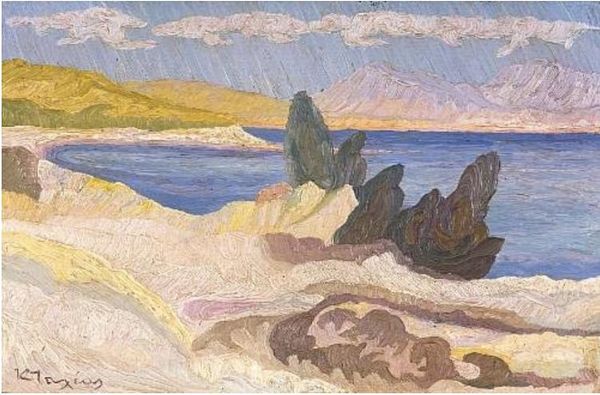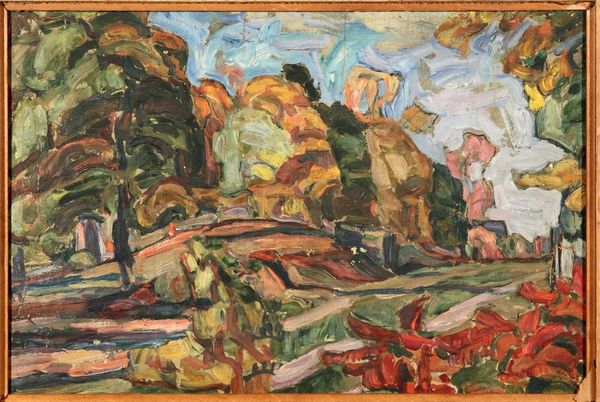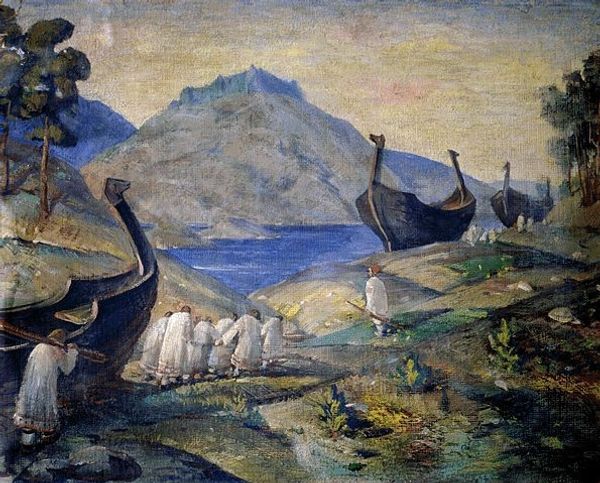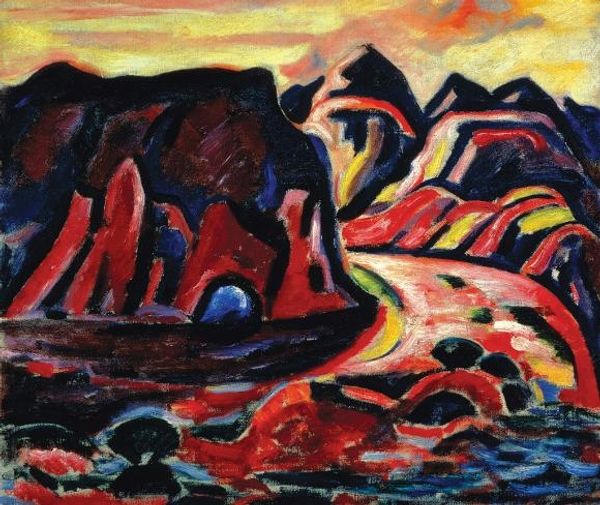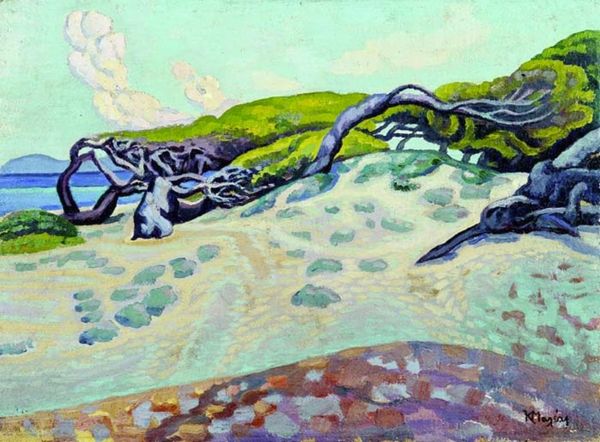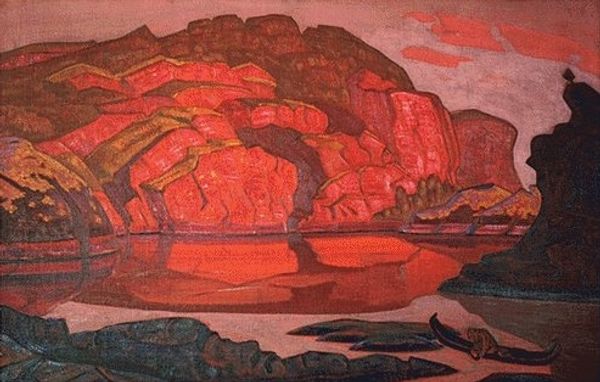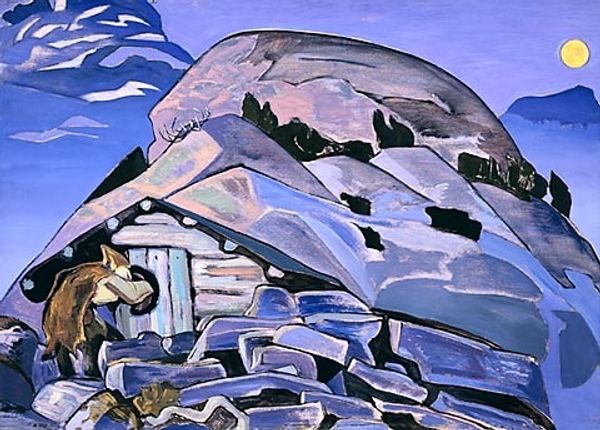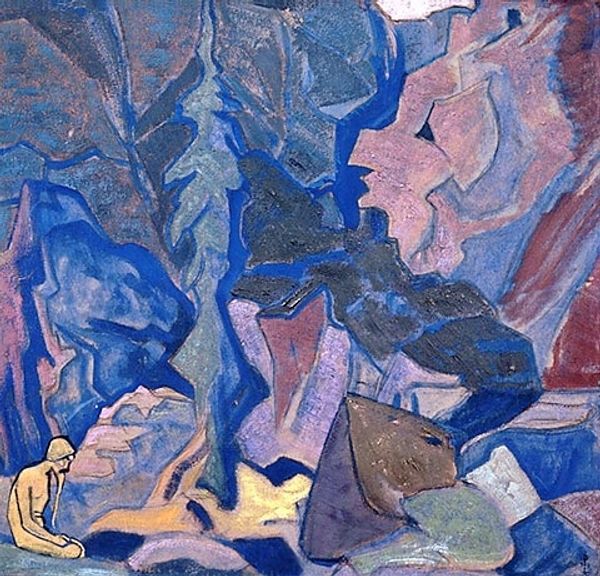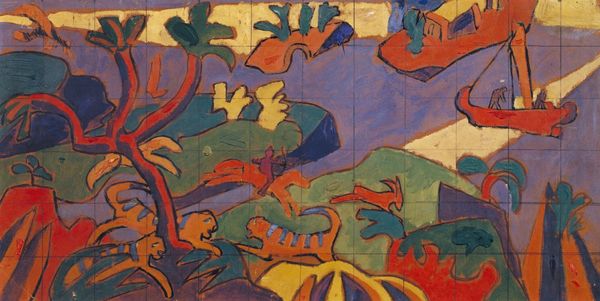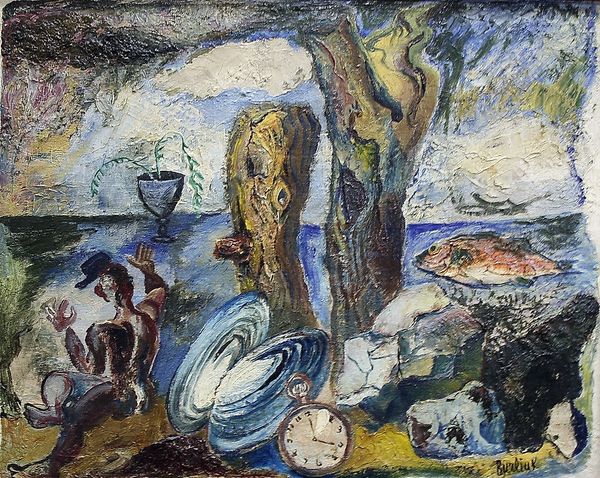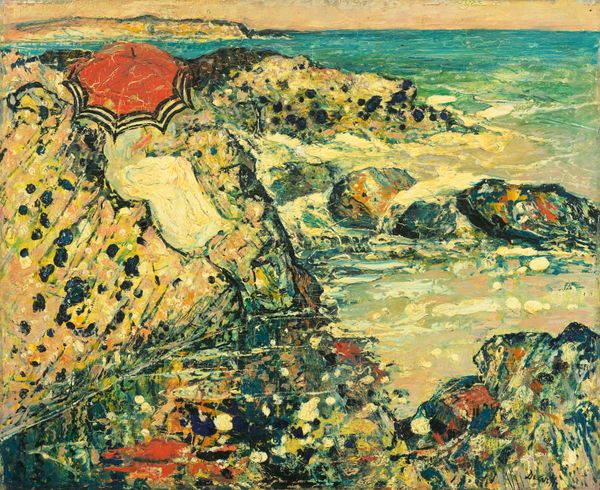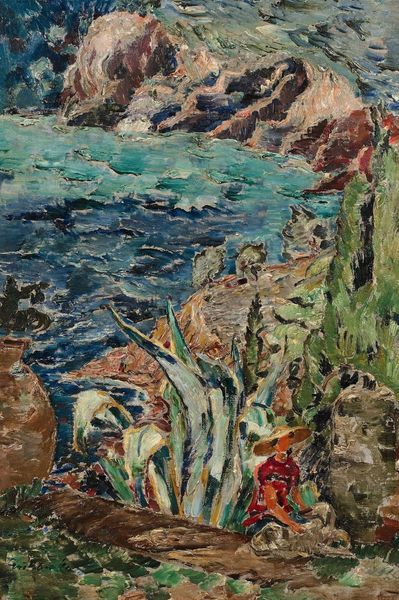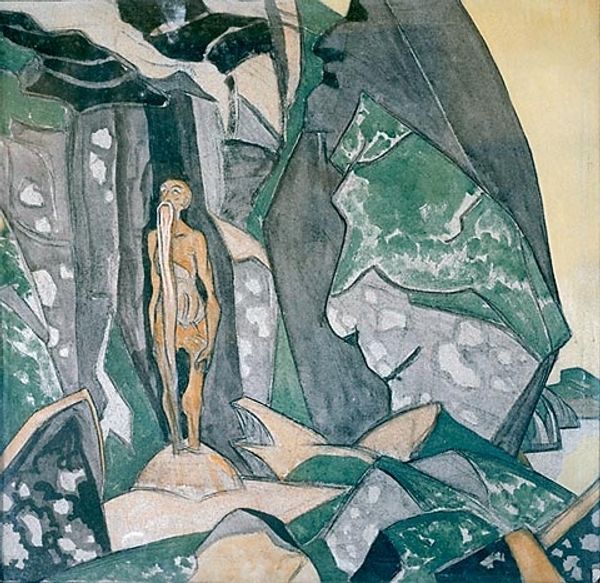
painting, oil-paint
#
narrative-art
#
animal
#
painting
#
oil-paint
#
landscape
#
figuration
#
handmade artwork painting
#
acrylic on canvas
#
folk-art
#
expressionism
#
naive art
#
paint stroke
#
mythology
#
symbolism
#
russian-avant-garde
#
expressionist
Dimensions: 39.5 x 44.5 cm
Copyright: Public domain
Editor: This painting, “Snakes Facing (Whisperer a Serpent),” created by Nicholas Roerich in 1917 using oil paints, really strikes me. The almost folksy depiction of the figure and the serpent, juxtaposed against that quite monumental landscape, is rather unsettling. What can you tell me about it? Curator: Consider the conditions of production here. Roerich painted this during the upheaval of World War I and leading up to the Russian Revolution. These massive, simplified forms of the landscape, rendered in oil, become a backdrop for examining the human relationship with, and perhaps struggle against, the forces of nature and social change. Look at the labor implied: mining the pigments, preparing the canvas, applying layer upon layer. Editor: So, the landscape and the act of painting itself speak to these broader conflicts? Curator: Precisely! The materials used, the deliberate flatness and choice to forgo perspectival accuracy—what do these choices tell us about Roerich’s intent, about his understanding of painting’s function? Isn’t it interesting to observe his choice to not hide the hand of the artist at all. Editor: I guess I hadn’t considered the social and political conditions informing Roerich’s specific techniques. So the somewhat ‘naive’ style… Curator: Should make you consider the labour. Think about how the ‘naive’ undermines any hierarchy between the artist, and their artwork; there is more labour than divine influence at play in what’s depicted in the piece. Editor: That’s a completely different lens through which to view the piece; focusing on its making helps me understand the symbolism on a completely different plane. Curator: It is not only a different lens; it allows us to reflect on everything the art piece *is* through reflecting on everything that it isn't or might not have been, including our preconceived definitions of labour.
Comments
No comments
Be the first to comment and join the conversation on the ultimate creative platform.

